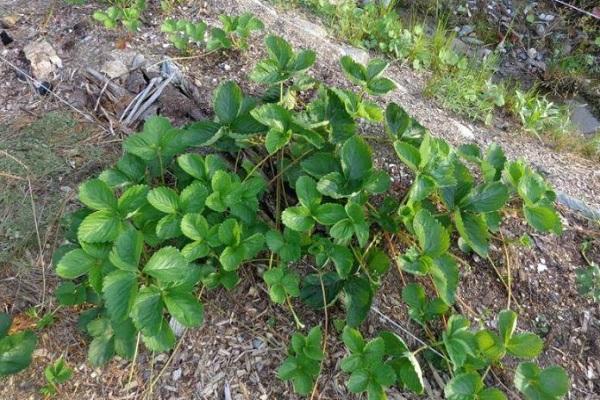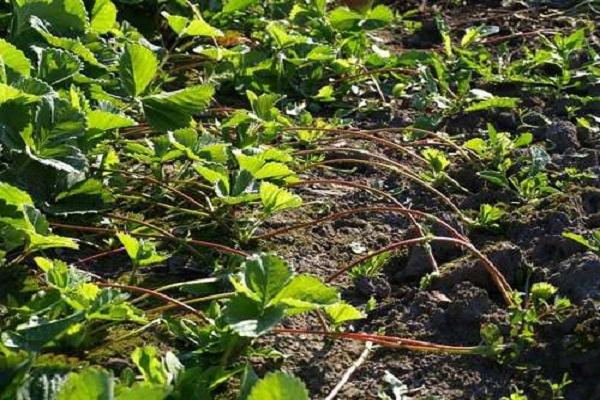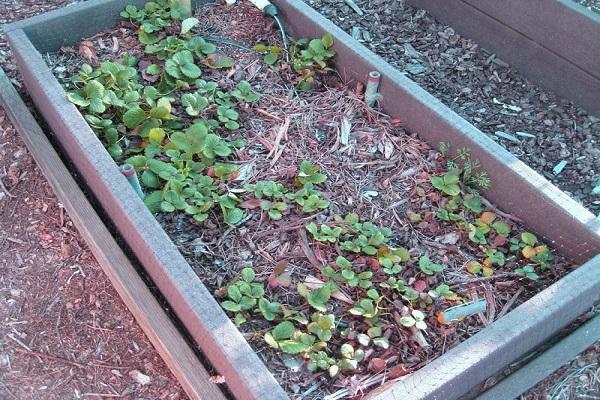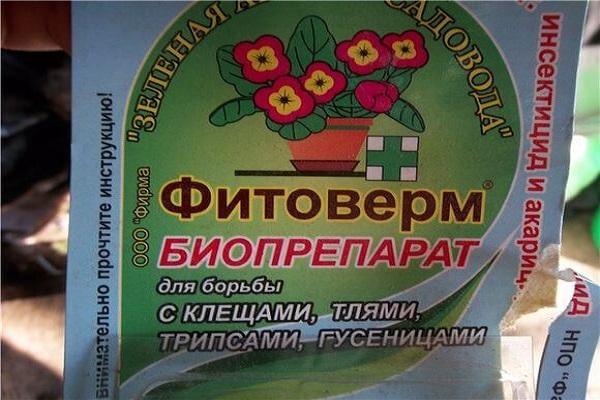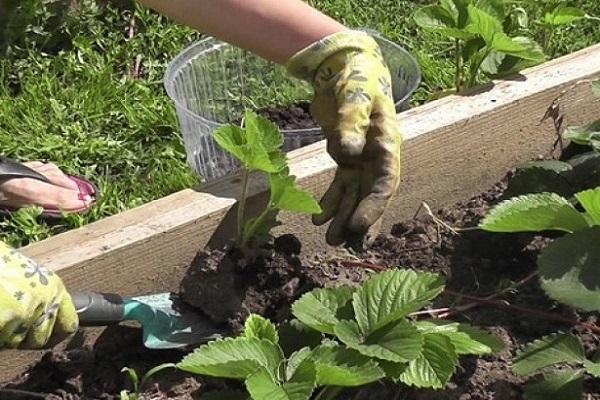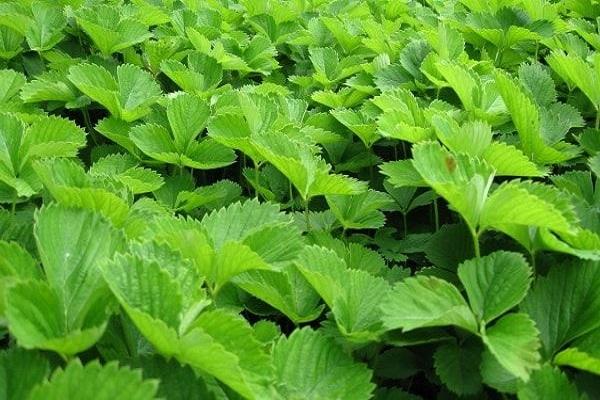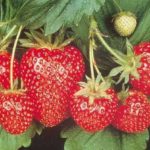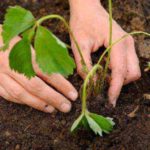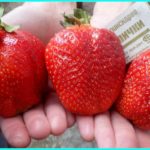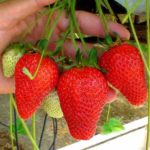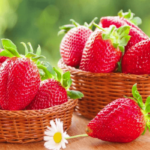Strawberries, as a relatively unpretentious and high-yielding crop, are grown almost everywhere. There are many varieties of it, most of which are resistant to adverse environmental factors. But there are situations when it is not clear why strawberries bloom profusely but do not bear fruit. To deal with this problem, it is necessary to become familiar with the main causes of such negative consequences and methods for eliminating them.
- Possible reasons why strawberries may not bear fruit
- Late boarding
- Incorrect planting depth
- Nitrogen overdose
- Lack of nutrients
- Weed strawberries instead of garden ones
- Hypothermia
- Degeneration of remontant strawberries
- Diseases
- Pests
- Lack of sun
- When should strawberries, with proper care, begin to bloom?
- What to do if the reason is not clear?
- Prevention measures
Possible reasons why strawberries may not bear fruit
To achieve the desired results when cultivating strawberries on your plot, you need not only to adhere to the correct agricultural techniques, but also to know what reasons can cause the lack of fruits with sufficient flowering.
Late boarding
One of the frequent prerequisites for the appearance of such an ailment as the cessation of fruiting is the planting of seedlings late. The optimal time for identifying plants in a permanent place is the second half of summer (last days of July - beginning of August). When growing strawberries in mid-latitudes, planting is recommended to be done in early September.
Before the onset of cold weather, the seedlings will have enough time to adapt to new conditions and lay fruit buds for the next season.
If you plant strawberry bushes late, you should not expect berries to appear in the summer. The plant will accumulate all its forces and direct them to the development of the vegetative mass, and it will have neither strength nor time left for the formation of buds. So it turns out that the harvest can only be expected next year. In such situations, gardeners are advised to pay more attention to plantings and increase care. With the right approach, strawberries will bloom and produce a rich harvest.
Incorrect planting depth
If mistakes were made during planting, the strawberries will also not bloom. The heart of the berry crop should not be allowed to be either too deep or too high. It is more correct if it is located at the same level with the ground.When planting deeply, the heart should be freed from the soil, and when planted high, it should be covered with soil.
Nitrogen overdose
Excessive content of a chemical element such as nitrogen in the soil leads to the absence of fruits on strawberries. An excess of fertilizer only provokes the growth of deciduous mass by the bush, as a result it turns out that garden strawberries become fattened. To remove excess nitrogen, it is necessary to water the berry plantation abundantly with clean water, and then add a phosphorus-potassium mixture to the soil. Strawberries will be able to recover only in a year.
Lack of nutrients
A lack of nutrients in the soil, especially nitrogen, potassium, manganese, boron and iron, in most cases, becomes a source of trouble in the form of poor strawberry fruiting. It is recommended to apply fertilizer mixtures according to the following recommendations:
- At the beginning of March, nitrogen and peat are added to the soil; it is better if chicken or manure is used for these purposes. The method of their application is embedding into the soil. Applying nitrogen-containing fertilizer after the end of the flowering phase is the key to an intensive growth rate, but you should not overdo it - the quality of fruiting will suffer.
- At the beginning and at the end of the season, feeding strawberry bushes with wood ash will be effective.
- During the active growing season, it is recommended to fertilize strawberries with a mixture of ammonium molybdate, urea and boric acid.
Weed strawberries instead of garden ones
If the strawberries on the plot are sufficiently fertilized, moistened, have a healthy appearance, but do not bear fruit, then the reason should be sought in the presence of weedy strawberries among the plantings. Such plants include Dubnyak and Suspension, which are distinguished by the rich green color of the leaf mass and the absence of fruits.If they form berries, they are small and deformed. Once such plants are discovered, it is necessary to remove them from the garden bed, otherwise the cultivated plantings will suffer.
Weed varieties also include Zhmurka, which is distinguished by its short bushes, and Bakhmutka, which is distinguished by its tall growth, abundant flowering and pink color of berries.
Hypothermia
If the winter is frosty and with little snow, the bushes will be left without protection, and the open heart will simply freeze. There is no need to rush to remove such specimens from the ground - during the summer season they will be able to recover and bloom the next year.
To avoid such negative consequences, it is recommended to cover the strawberry bushes with fallen leaves, agrofibre or spruce branches. Additional protection for garden strawberries will also be required in the event of return spring frosts.
Frost damage to the heart can be determined by its darkening. Errors when choosing a place for a berry plantation increase the likelihood of strawberries freezing. It is not advisable to plant plants in lowlands where cold air accumulates.
Degeneration of remontant strawberries
If strawberries are blooming but there are no large berries on them, the reason may lie in their age. A remontant crop is not capable of bearing fruit abundantly in the same place for 5 years. These strawberry bushes are distinguished by sparse flowering and small fruits. It is recommended to update the berry plantation by planting young plants.
Diseases
Diseases such as powdery mildew and leaf spot can provoke a lack of harvest on strawberry bushes. To prevent the development of such ailments, you need to loosen the soil, remove dried leaf blades from the area as soon as the snow melts, treat with Bordeaux mixture 3% (in spring), and before the flowering phase - 1% solution.
In addition, it is necessary to collect and destroy buds infected with weevil larvae. After harvesting, it is also effective to use Bordeaux mixture to process strawberries.
Pests
Another reason for the lack of ovaries on strawberry bushes is the vital activity of such a small but harmful insect as the weevil. The buds do not have time to bloom before they fall off. The parasite lays its eggs in buds, which complicates the fight against it. You can fight the weevil with Fitoverm, Admiral or Iskra-Bio, diluted according to the instructions.
Treatments should be carried out in the morning and a week before the start of the flowering phase.
Lack of sun
Since strawberries are heat-loving plants, you need to choose a place for planting in well-lit meadows that are protected from draft winds. If planted in the shade, then due to the slow development of plants, flowering is excluded. The solution would be to transplant to a more suitable place.
When should strawberries, with proper care, begin to bloom?
Early ripening varieties begin to bloom from mid-May, and late ripening varieties - from the end of May. The flowering phase lasts almost 3 weeks.
What to do if the reason is not clear?
If you can’t identify the reason for the lack of fruits on strawberry bushes, you need to take care of comfortable growing conditions for them. Regularly loosen the soil after each watering to prevent oxygen starvation of the roots, remove weeds from the site, which only take away moisture and nutritional components from the soil.
Apply fertilizer compounds to the soil in a timely manner and carry out treatments against harmful insects and diseases.This approach will allow the plants to recover and begin to bear fruit.
Prevention measures
In order to prevent a decrease, or even a lack of harvest, it is necessary to take the following preventive measures:
- Remove diseased plants from the plantation.
- Perform treatment at the strawberry flowering stage. During the active growing season, the bushes are mulched with organic matter or agrofibre is used for this purpose. Before the flowering phase, it is good to use special products against harmful insects and fungal diseases. When the ovaries appear, phosphorus should be added to the soil, and after flowering - a complex composition.
- Spray the bushes with agrochemicals. Those plants that grow in one place for a long time suffer more often than others from fungal and viral diseases. Therefore, it is advisable to carry out treatments with Bordeaux mixture with the addition of soap and fungicidal agents 4 times per season. Karbofos and Metaphos are highly effective against parasites.
To successfully grow strawberries, you need to choose only high-quality planting material and not ignore basic care rules. Only with this approach will strawberries set and delight their owners with the unsurpassed taste and aroma.


